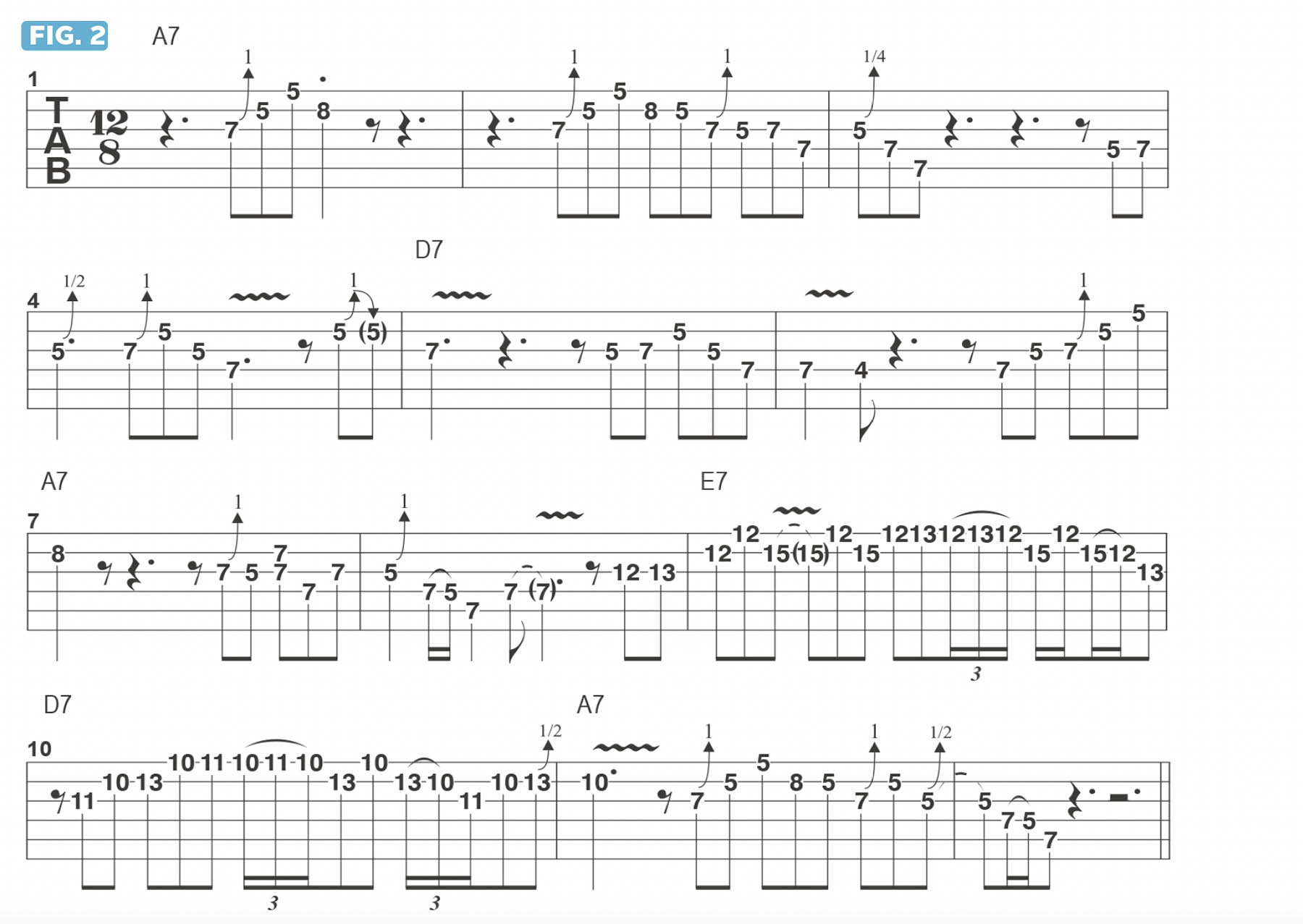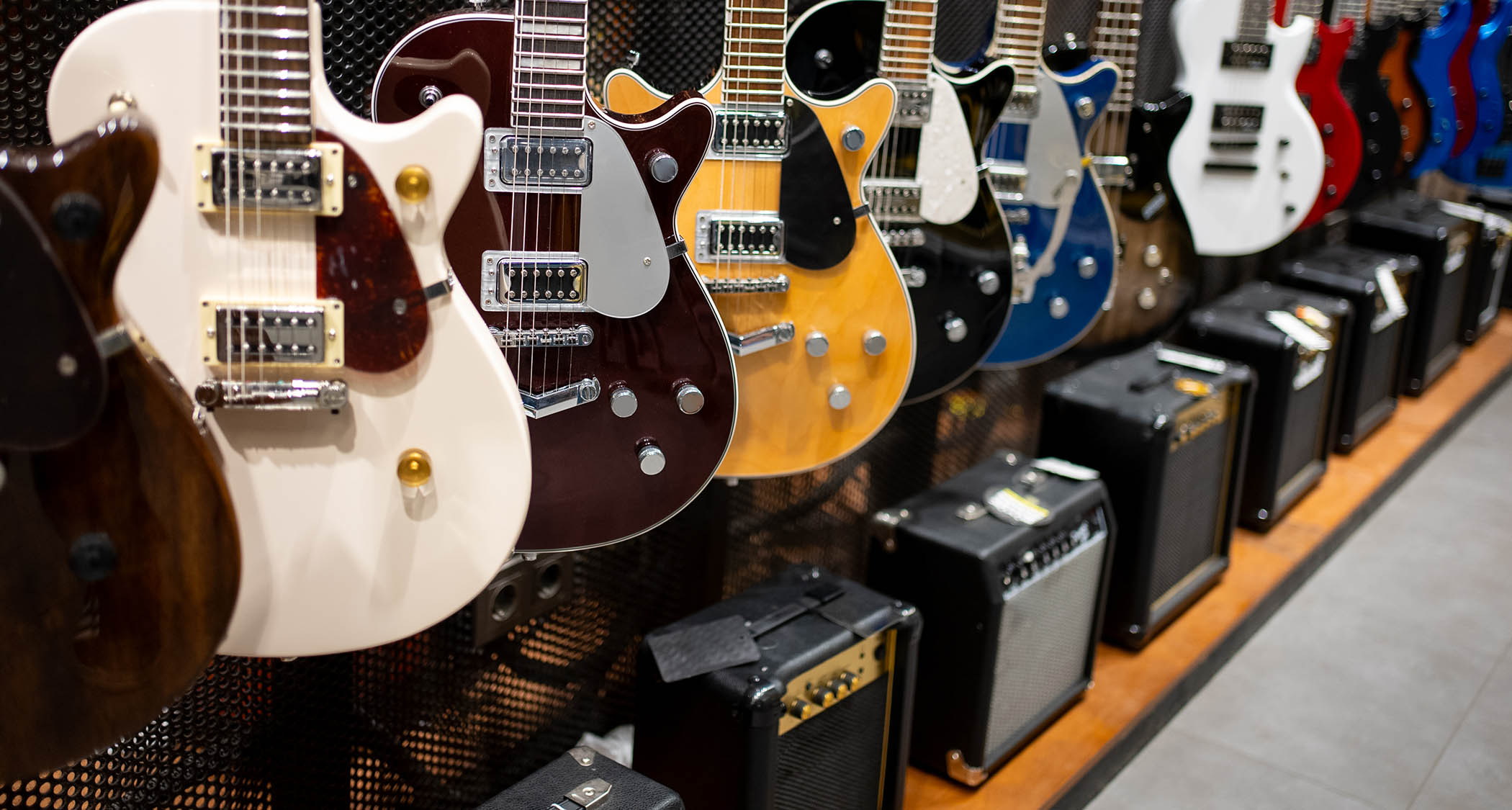Learn the Chicago blues shuffle style
Kirk Fletcher gives you a lesson in the blues guitar style pioneered by the great Buddy Guy, Junior Wells and Magic Sam
In this column, I’d like to go over some of the basics of the classic Chicago blues shuffle style, as heard in the iconic recordings of Magic Sam, Buddy Guy, Junior Wells, Earl Hooker and many others.
Let's start by laying down a signature Chicago-style shuffle groove in the key of A. As shown in Figure 1, the shuffle is played in 128 meter, which may be counted “one two three, four five six, sev eight nine, ten lev twelve” or “one two three, two two three, three two three, four two three,” in either case with three evenly spaced triplets falling within each of the four primary beats.
When playing this repeating pattern on each chord, strive for precise execution and articulation, with a sharp attack on the chords and a combination of ringing notes and staccato (short) notes for the riff. As always, try to lock into the groove to make this rhythm part as swinging as possible.
Figure 2 presents a solo played over this rhythm part. Stylistically, I’m going for an Otis Rush/Buddy Guy/Magic Sam type of vibe. Bars 1-4 are played over the I chord, A7, and as you can see, the licks are a bit sparse and rhythmically very specific.
In this way, the solo functions as much like a “theme” as it does a guitar solo. In bars 5 and 6, over the D7 chord, I alter the melody slightly and then return to it when we come back to A7 in bars 7 and 8.
Over the E7 and D7 chords in bars 9 and 10, I use the opportunity to break into some new rhythmic and melodic territory before bringing the solo “back home” in the last two bars with a restatement of the opening theme.
All the latest guitar news, interviews, lessons, reviews, deals and more, direct to your inbox!


